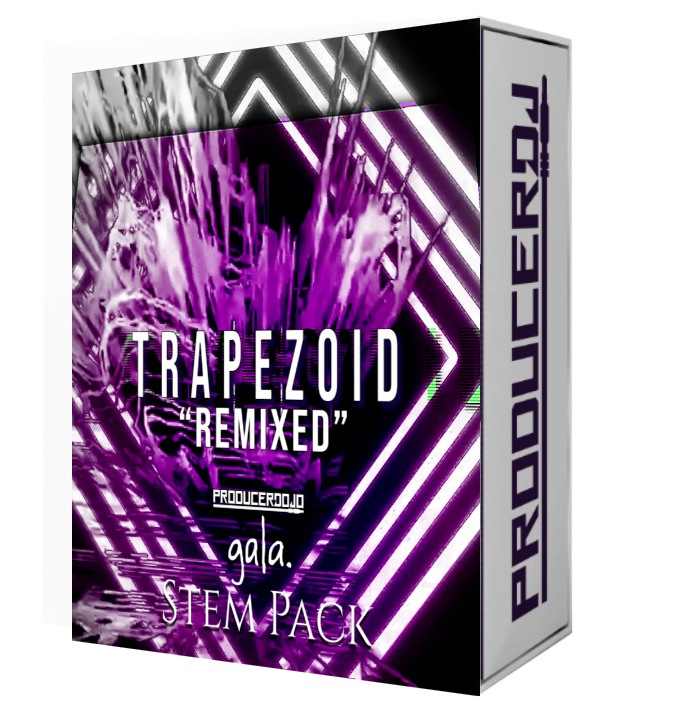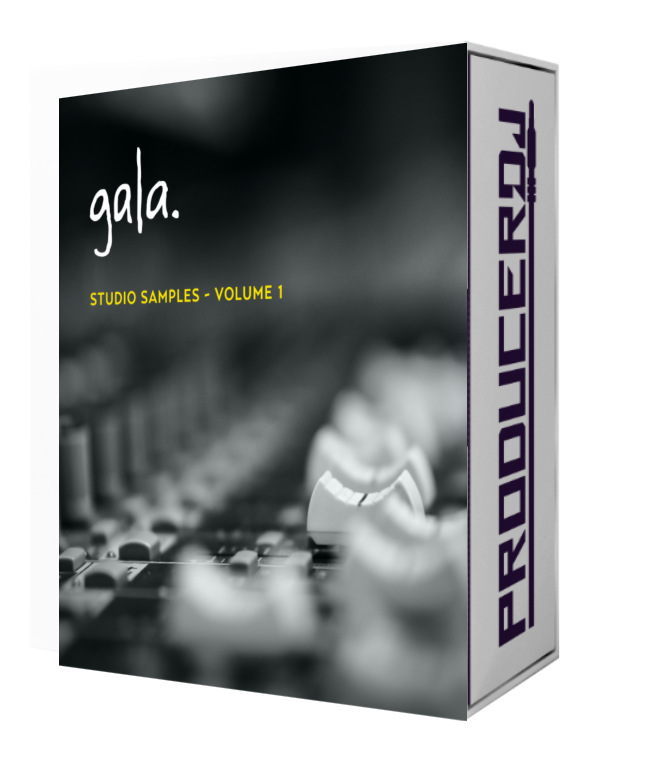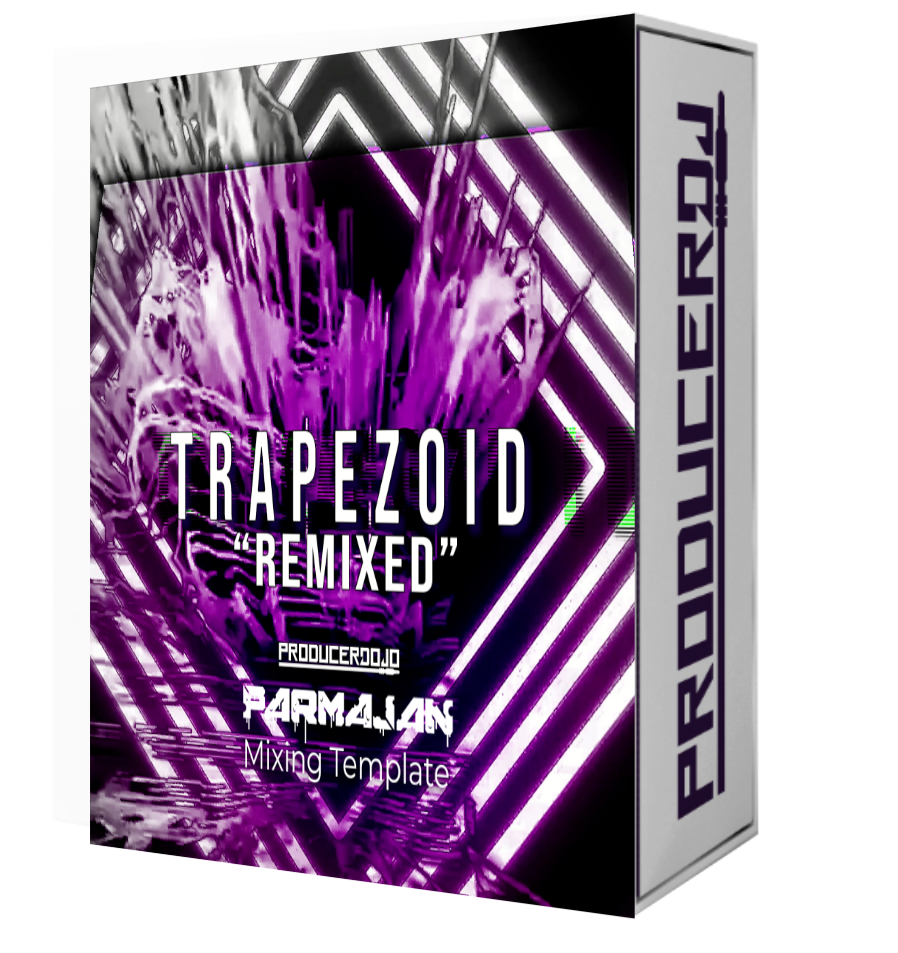Meet the artists behind the Trapezoid Remixed EP
Congratulations on the release of the Trapezoid Remixed EP! How much time did it take for you to complete your song on the EP and what did you learn along the way?
Life is a Gala
My remix required over 200 hours of effort, spread across nine months. The final shipped pre-master was version 37. I recall one weekend entirely consumed by layering kick/snare samples. Each version represents a significant step towards the outcome – incorporating feedback, detailing the arrangement, and tightening the mix. Version 37 does not in any way sound like version 1; this reminds me to continue remaining open to outcome, as I never know the many surprises that will be revealed along the way. This leads to my most significant learning – to embrace curiosity and play.

Parmajan
I first started working on the track in August of 2020 when ill.Gates announced his remix contest and it took me roughly a month to get a first iteration of the whole track. I was pretty stoked about my remix and at the time I had the opportunity to book a one on one session with ill.Gates going over my remix. During the session, he told me that it sounded a bit too similar to his original, and this may have been the case since I had springboarded off of the original trapezoid session, using some of the same main elements in my arrangement. I felt a bit discouraged and decided to create a whole new, more original sounding trapezoid remix, which never got finished. At this point I wasn’t even going to submit my first remix for the EP, but then I received a text from ill.Gates after the deadline asking where my remix was, and that he had played it out! I was surprised and excited to hear this and immediately pulled up my project and made many small edits to polish the pre-master and submitted my track. Through this experience I learned to handle rejection, and to stay positive and looking forward, as well as how to refine a song by taking away elements, i.e. “killing puppies,” to make a better checkerboard. Sometimes things don’t seem like they will work out in the moment and they come around later on, and I believe if someone really loves what they do, they should never give up even if they feel discouraged. Failing is part of learning and every failure in one way or another leads to success!
Pirate Radio
Brian: Compositionally it came together very quickly. Right before the remix was due, Karan picked up a throwaway songwriting exercise track I had previously uploaded onto our shared server. I think he banged out the first version in one session over a few hours. Then once ill.Gates expressed interest in putting it out on the EP, we booked a few 1-1 sessions with 6th Street to polish it up and especially to work on checkerboarding it. Then some time passed and we managed to somehow lose the Ableton set with the approved mix and master. Probably a good 30-40% of the time spent on this track was just going through old Ableton sets trying to recover the “good” version. Then we had a final round of mix/mastering feedback from ill.Gates to get the track up to the standard of the others on the EP. Maybe 80 hours or so between the two of us, quite a bit of it unfortunately avoidable. Oh well.
Karan: Yeah it was the kind of stuff that the 2021 remake of Spinal Tap would be made of.
What were the most groundbreaking concepts that you learned while making your song for the EP?
Life is a Gala
Shifting my approach from composing music to designing sound. Other concepts include gain staging, techniques to resolve EQ issues, using timers to time box efforts and maintain focus. Also the ability to remain unattached – I had to constantly toss familiar and loved elements in the pursuit of better.
Parmajan
Honestly, I may have spent more time editing and cleaning up the track than it took me to arrange the whole thing. I learned through this experience how to checkerboard better and how to avoid a common problem called ‘layer caking.’ There were definitely some moments in my first iteration where the elements were overlapping in a cluttered way causing the music to sound a bit busy, or unclear. Working out what was causing the cluttered-ness and cleaning it up significantly helped me advance my skills in arrangement, allowing me to plan ahead much better in which elements should be in the forefront and which in the background. Besides, arrangement, I was also challenged to refine a mixdown to be as clear and loud, as balanced and dynamic, as possible. I was able to experiment with many different approaches on mixdowns and masters, which gave me much insight and training on what translates and what doesn’t. My journey is still beginning but this I believe is a great first step for me.
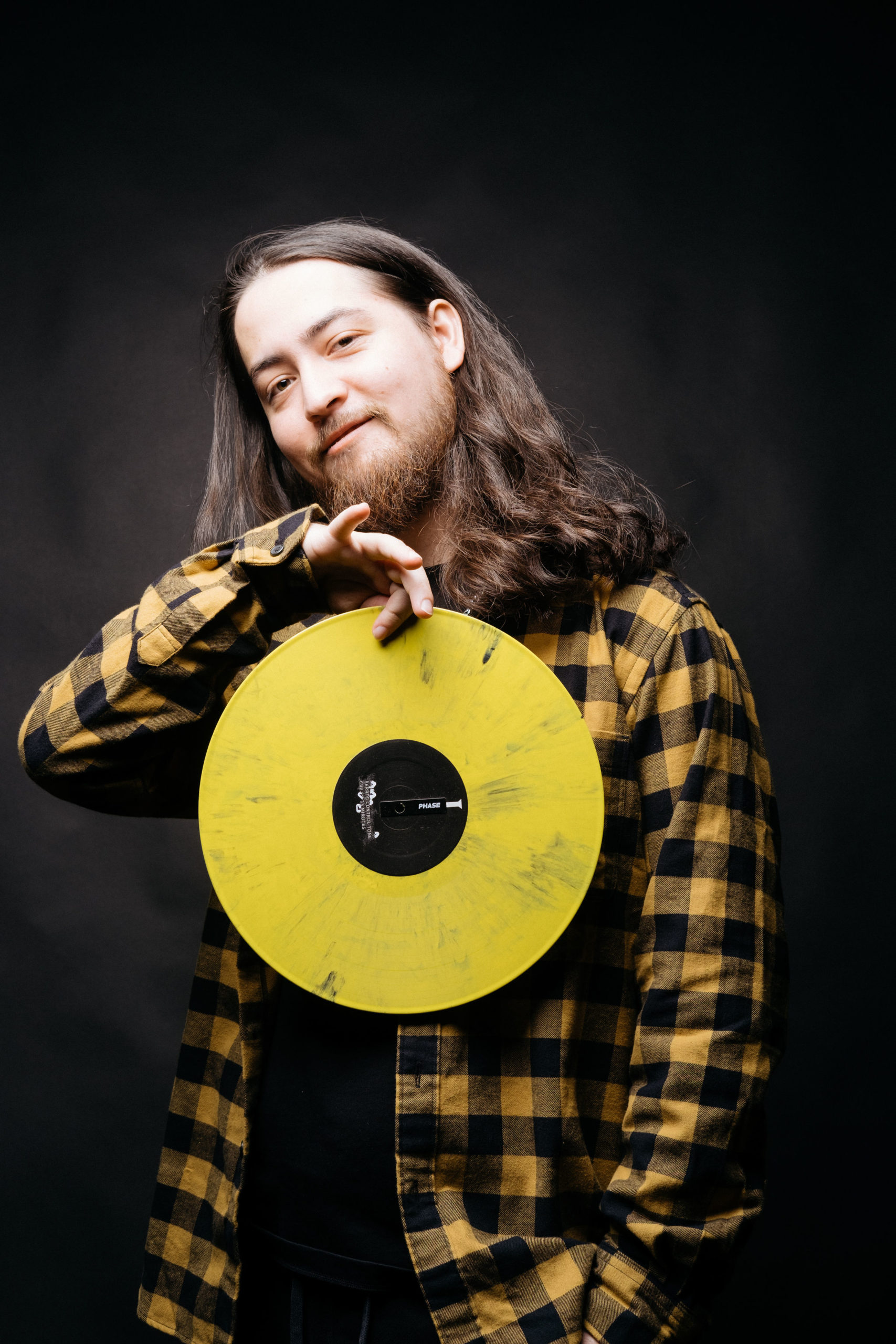
Pirate Radio
Brian: I wouldn’t say it’s groundbreaking but, as we’re a two-person act, we really need better version control than what is currently available. We were early adopters of Splice, when it was presented more as a collaboration tool than as a sample repository per se. And it does the latter thing really well, but collaboration not so much. We need something like Git LFS or maybe subversion to really track changes in a transparent way when we’re collaborating and working on the same set but independently. This has been a glaring need for us for years now but the experience of losing important changes on this track really drove that home. Hopefully one of the zillion bedroom producers who are also software developers will do something that works well in this space.
Karan: Making a shorter song is harder than a longer one. How is that possible?? I don’t know, but we had to cut down a 4.5 min track into one closer to 3, and that was tough. You gotta make some hard decisions, and you gotta make things transition smoothly, quickly.
What are some of your favorite approaches for quickly getting a great idea down in the DAW?
Life is a Gala
Sounds are my primary inspiration, especially harmonic textures and atmospheric layers. I often start recording and cycle through random sounds while noodling on my keyboard. I am SO attached to any “randomize” button – anything that keeps my fingers on the controller rather than the laptop. In terms of identifying GREAT ideas, this happens after there is a substantial amount of rough material. If I start judging or critiquing too early in the process, this immediately disrupts my flow. During this first part of the creative process, I love letting all ideas fly. Further down the road, it becomes time to filter and prune – plenty of time to get critical.
Parmajan
I love to start with the drums and sub, first getting a rough idea of the flow I’d like to go for. Next I’ll experiment with sound design to fill out the more detailed flow and rhythms on top of the drums and sub. I like to come up with ideas through sampling, by warping, post processing and resampling, or by generating sounds by applying heavy amounts of distortion to basic sounding instruments. Often I’ll come up with a melody using MIDI, and sound design different bass sounds for each note or section of the musical phrase. I think it’s very fun to create musical phrases, such as call and response using musical structure and rhythm.
Pirate Radio
Brian: Playing it! This is honestly the only aspect of music production that I enjoy. The fastest way to get an idea out of your head and into a DAW is through an instrument. I’ve had to draw MIDI occasionally when trying to collaborate with people in environments where we lack our usual gear. That sucks big time.
Karan: Ever since I wiped the dust off my Ableton Push at the start of the pandemic, it’s made idea generation a lot more fun. It’s made so that non-musicians like me can also make music, and I appreciate that. Set a scale so you can’t play a wrong note, throw on Ableton’s Arpeggiator, and smash some keys: arps!
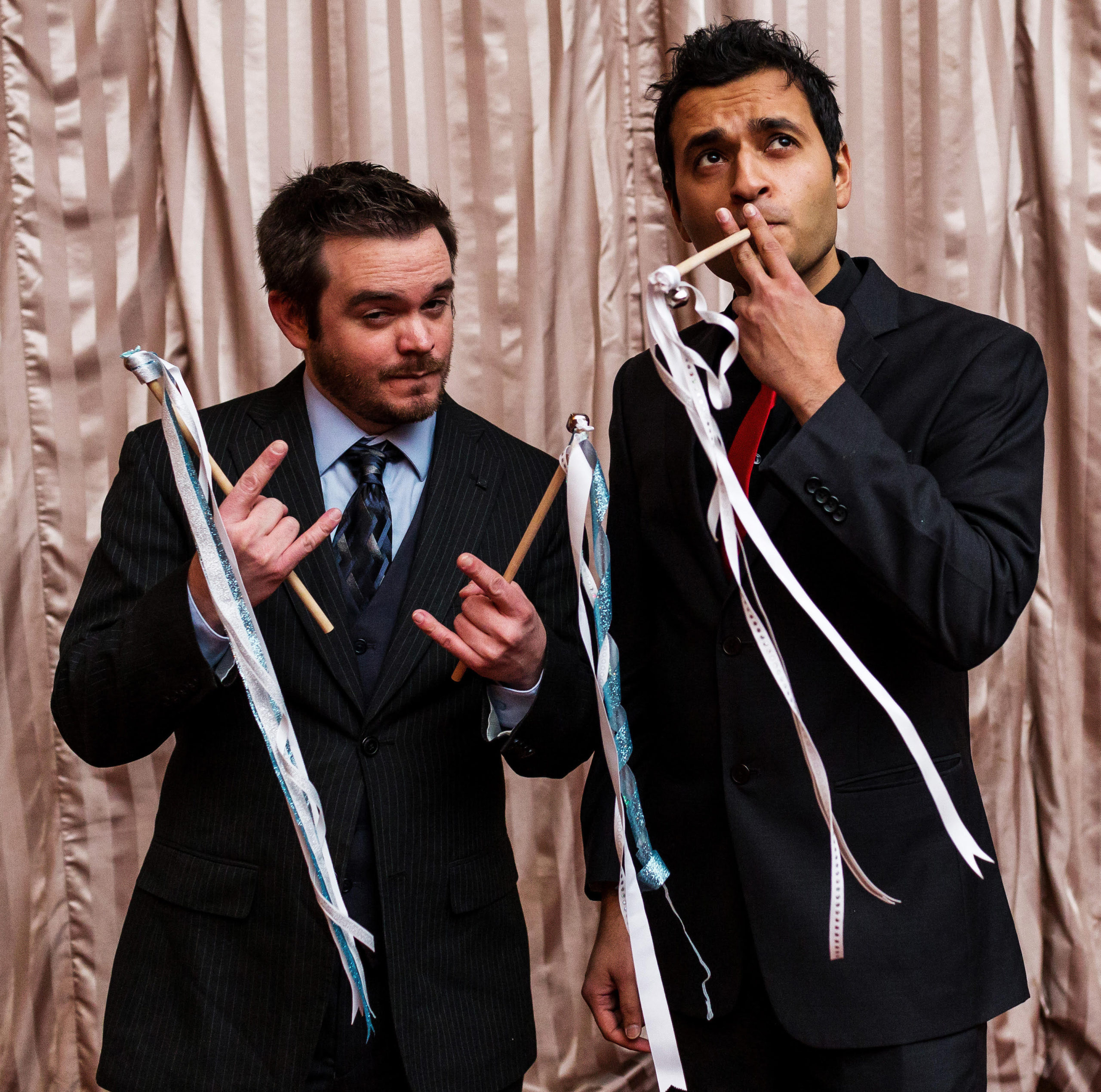
How do you approach Collabs? Do you have any best practices to share?
Life is a Gala
New collaborations are different from long-term collaborations – the novelty of the new vs. the wisdom of shared experience. Regardless, I have three suggestions for collaborators when offering feedback and input: 1) be as kind as tactful as possible; 2) be specific; 3) propose at least one alternative. If you can’t do all three, then…shut up.
Parmajan
I don’t have a ton of experience with collabs, but from my experience it’s best to get on the same page about which plug-ins both artists have and just making sure there aren’t any conflicts if we’re passing the project between us in two environments. In my experience, collabs have been most successful when both artists are in the same room working on the project together and if the project just stays on that computer. I’d be very interested in expanding my collaboration efforts in the future, since I think it helps relieve writer’s block when handing over a project you’re stuck on to a friend to collaborate on. However, In general I think it’s most successful when both artists share a similar style, vibe or workflow.
Pirate Radio
Brian: There are two collaboration modes for us. The simplest is when someone asks for guitar work on a track of theirs. That’s usually just a matter of them bouncing their master, sending it to me, and then I send them back either an Ableton Live set (if that’s their DAW) or wet and dry stems. Otherwise if we’re trying to collaboratively write a new track with someone, the way that usually works is, we get into the same physical space if possible (or a GMeet meeting if not), and then I start with idea generation. Shopping synth presets (usually in Omnisphere) and recording melodies and chord progressions until inspiration strikes. Then I usually do a bassline while Karan fills in some percussions and whoever we’re working with contributes whatever they want. Then after that first session it’s a matter of sending sets or stems back and forth (hopefully no more than a few times).
Tell us about your new Product available in the Producer DJ marketplace.
Life is a Gala
I am offering a stems pack for my Trapezoid remix, as well as a collection of studio samples recorded several years ago – a range of instruments including Cymbals, Duduk, Tuning Forks, even Tupperware.
Parmajan
I will be offering a template I’ve developed, incorporating the organization and signal flow I use based upon the Skrillex Template. Soft clipping and side-chaining are pre-implemented so producers can jump right into arrangement and sound design without having to mess around with signal flow. Each group is sent to either the Side-chain Bus or the PreMaster Bus, depending on the type of elements present. Also, minimal processing is applied to each group to save time, making mixing as I arrange second nature. Furthermore, all tools used within this template are Ableton stock plug-ins, and therefore anyone with Ableton can use the template. This template is intended for use with Ableton Live Suite, as I use some Suite-exclusive instruments such as Operator and Max for Live Invisible Splitter in the project. Included is also a mastering chain, which can quickly get a track loud while giving minute control over the balance of the mix to the user before limiting. Many of the Ableton stock plug-ins can be replaced with more expensive plug-ins, but this template showcases what type of processing would be used in which place and why, using only free plug-ins. Therefore, it is as barebones as possible while achieving what I need to boost my workflow in the early stages of production. I’ve included a demo session with a drop arrangement idea, demonstrating the side-chaining functionality and routing within the project, and showcasing my sound design techniques and approaches. Within the demo project, I use one free external plug-in called Free-Clip which, I recommend everyone uses pre-mastering to tame transients. Included is also a Bonus track containing a Mudpie with many glitchy sounds created using Portal that may be useful.
Who are you listening to for inspiration these days?
Life is a Gala
Am always listening to a wide range of music, from baroque to bass. Current favorites include Phoria, Ólafur Arnalds, Nils Frahm, William Basinski, Eprom, Arca, Sigur Rós, Mica Levi, Max Richter, Stars of the Lid, Astor Piazzolla, Arvo Pärt, A Winged Victory for the Sullen, G Jones.
Parmajan
Lately I’ve been listening to a lot of underground trap artists such as bd hbt, anti., Eater, RemK, Jiqui, and Juelz, and exploring the wide catalog of mixes from up and coming as well as highly established artists under #Bangeurs with Benzi on soundcloud. Besides this I highly enjoy listening to Tech house from the Night Bass music label, and have been listening to the Higgo’s Happy Place playlist on Spotify for good chill vibes.
Pirate Radio
Brian: Today I listened to Devin Townsend (extreme/progressive metal) and Bob Moses (deep house with vocals and instruments). That’s pretty typical. God, I wish we could make music like Bob Moses. When we achieve our final form maybe we will. Also we realized pretty soon after we joined the Dojo that most folks here make bass music, and we don’t. But that’s ok. We’re in it for philosophy, workflow, and meeting interesting and talented people.
Karan: A mix of indie rock, 90s boom bap instrumentals, progressive house, progressive metal, americana, trance, alternative rock and more. A lot of War On Drugs! Can’t wait for the new album that drops in a few weeks.
What are your top 5 favorite VST’s at the moment?
Life is a Gala
NI Arkhis. Spitfire Phobos. Cannot say enough about FabFilter products in general. Omnisphere (still). And Output Arcade is a blast.
Parmajan
The top 5 VSTs I find myself using in almost every track are: Fab Filter Pro-MB. Soothe 2, Output Portal, Leapwing StageOne, and Leapwing CenterOne. I feel that these are the irreplaceable tools I find myself using for mixing, mastering, and sound design in almost every track.
Pirate Radio
Brian: Omnisphere, Guitar Rig 6, BIAS FX, Blackhole Reverb, Soothe 2.
Karan: Omnisphere, Arturia Pigments and Diva for amazing sounding instruments, melodic sequences and percussive sounds, s(M)exoscope for checking levels over time and then clipping peaks, and finally Soundtoys Decapitator for good ol saturation.
What can we expect from you for the rest of 2021 and beyond?
Life is a Gala
Releasing more music – at least one EP, and several film/television scoring projects. Am also working on a site-specific sound installation concept.
Parmajan
I’ve been honing my sound design, mixing and mastering capabilities and have set my next goal as an official Producer Dojo EP to achieve Black Belt. I’ll be focusing on cranking out more and more tracks and leveling up to reach my goal.
Pirate Radio
Well the Trapezoid EP obviously. After that we might have another EP coming out this year, a collaboration. We’ll see on that one. Hopefully shows! We started off as a live act and that’s still where we’re most at home.
Is there anything else that you would like to share with us?
Life is a Gala
Have fun making music, but also embrace the hard work.
Parmajan
Feel free to hit me up to kick it if you’re in Orange County, California! Peace and love to everyone.
Pirate Radio
Hit us up if you live near NYC, or if you don’t! We’re friendly guys and we like jams and hangs.
Stream/Download the Trapezoid Remixed Ep here
Follow on Social Media:
Life is a Gala
Website, SC, Spotify, PDJ Marketplace
Parmajan
SC, FB, IG, TW, PDJ Marketplace
Pirate Radio
Website, SC, Spotify, FB, IG, YouTube
ill.Gates
Website, SC, FB, TW, YT, Spotify, IG, PDJ Marketplace
UHNK


